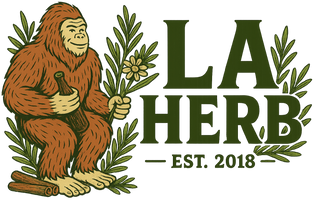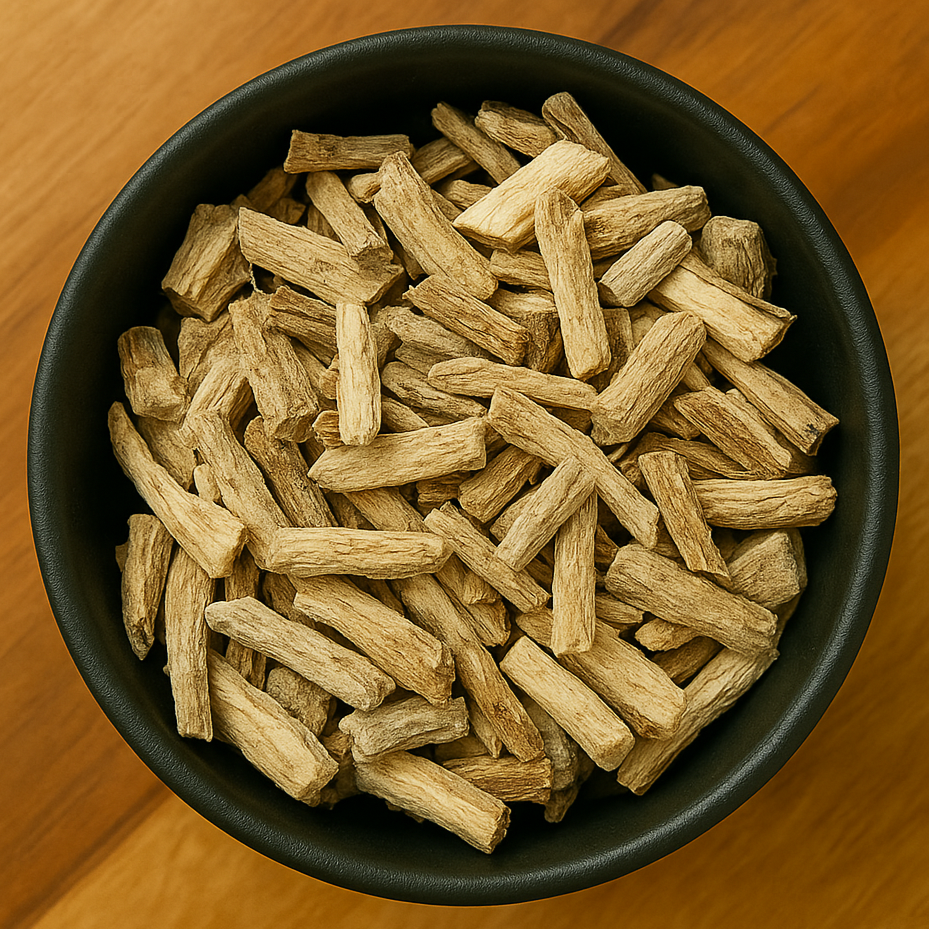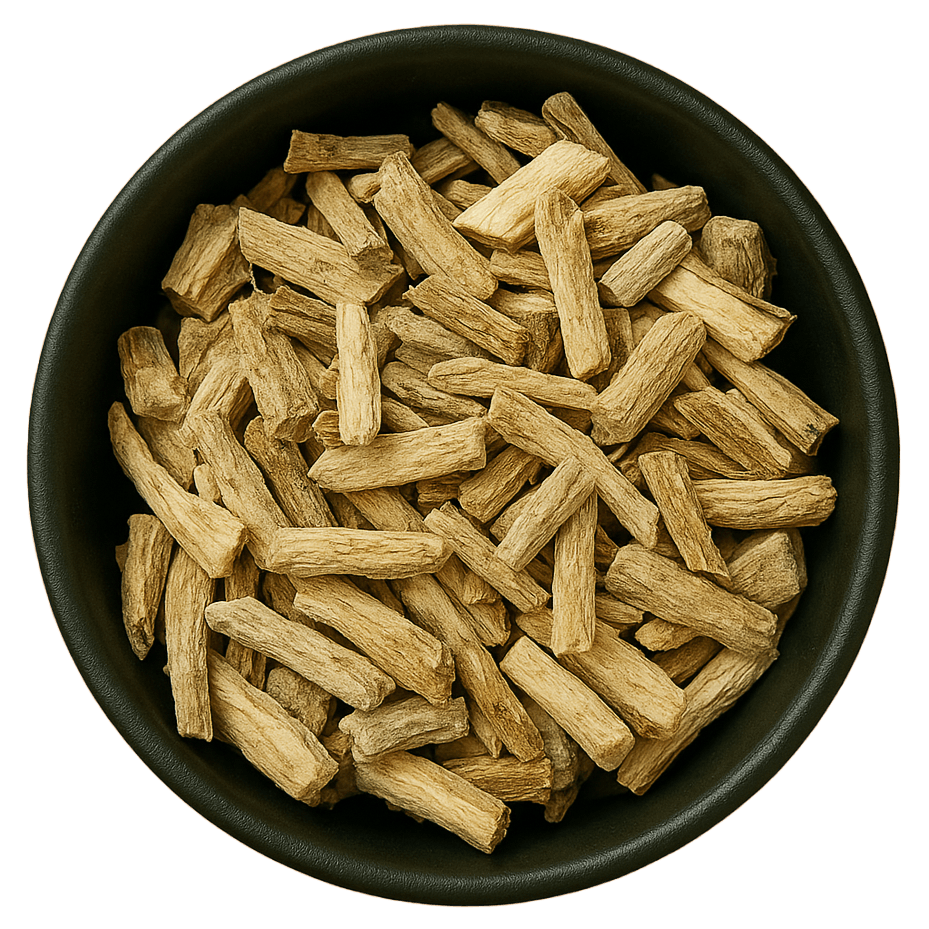Eleuthero Root Bark Pieces (Eleutherococcus Gracilistylus)
Eleuthero Root Bark Pieces (Eleutherococcus Gracilistylus) - 1 oz is backordered and will ship as soon as it is back in stock.
Couldn't load pickup availability
Eleuthero Root Bark Pieces (Eleutherococcus gracilistylus), traditionally known in Chinese medicine as Wu Jia Pi (五加皮), are harvested from a hardy shrub in the Araliaceae family. This herb has a long history of use in Traditional Chinese Medicine, where it is valued for its ability to dispel wind-dampness, strengthen the sinews and bones, and support mobility, particularly in the elderly or those recovering from physical strain.
Wu Jia Pi is considered a warming and invigorating herb, often used in herbal formulas for musculoskeletal discomfort, joint stiffness, and weakness of the lower back and knees. It is also included in restorative formulas to help promote circulation, alleviate swelling, and tonify the liver and kidneys—two organs associated with strength and movement in TCM theory.
The bark is typically decocted into teas or boiled with other herbs in tonifying blends. While Eleuthero is often associated with energy and endurance in Western herbalism, the root bark used here plays a more targeted role in supporting structural and mobility-related issues from a traditional East Asian perspective.
Each batch of Eleuthero Root Bark is carefully prepared from mature stems, dried and cut into rough pieces suitable for herbal teas or longer decoctions. It offers an earthy, slightly bitter profile and is commonly combined with other herbs that address joint and tendon health, such as du zhong (Eucommia bark) or niu xi (Achyranthes root).
Use under the guidance of a qualified herbalist, especially in formulations for chronic musculoskeletal discomfort, post-injury recovery, or traditional kidney-liver deficiency patterns related to aging or overwork.
Also Known As: Wu Jia Pi, Five-Leaf Ginseng Bark, Eleuthero Root Bark, Eleutherococcus gracilistylus, Cortex Eleutherococci, Siberian Ginseng Bark, 五加皮, Wujia Pi
Nutrients: Lignans, eleutherosides, triterpenoids, polysaccharides, flavonoids
Notes: Traditionally used to strengthen bones and sinews, dispel wind-damp, and support lower back and knee function. In modern herbal use, it's valued for promoting energy and resilience, similar to adaptogens like ginseng.






